Honeymoon TR: Horta part II
(Last Updated On: )
We were so fascinated with what the historic and nautical town of Horta had to offer that we didn’t feel that we could do it justice in just one trip report. So, we split it into two!
As I said in our previous blog about Horta, this city is historically a port that has been used as a resting and refueling station for ships/sailboats that were crossing the Atlantic. Thus, the Horta harbor has become a popular destination for current sailors who are just out on their own ocean adventures.

This harbor is most known for the murals that these sailors paint during their time on-shore. They have covered the harbor with their stories. The murals can include the name of the boat, where they’ve been, where they are going, their website address, they names of the crew, and more. Growing up a sailor myself, I wanted to make sure to give this harbor the time it deserved.

Every inch that could be painted on, they used. Murals seem to only last about 10 years before the weather and sun get the better of them. As they fade into oblivion another mural is painted over it.

No matter what they painted, it was clear that these people were on the adventure of a lifetime…. and some of them had been living that adventure for years.

You could feel the energy, the spirit, the camaraderie…..

And then it dawned on us. They are just like us. Though we may live our adventures in the mountains, these people live their adventures at sea. Like us, they spend any free time they have and much of their income just to live their adventure. They befriend other world-traveling sailors as we have befriended ski bums in ski towns all over the world. Sailors and skiers are of the same mind, but live in different realms of the Earth, part of a different tribe.

Gazing at all these murals inspired us too. We hope some day, a long-ways down the road, to live our own ocean adventures. Around the world on a sailboat? Suddenly it has become a real possibility for us and we have talked about it regularly since visiting this harbor. Of course, we have our work ahead of us. Research is key, and money is too. But, if there’s a will there’s a way. And all of you know our thirst for adventure 🙂

And as it turns out, we are not the only Coloradans hearing the call of the sea. Anyone know these folks from Bailey?

All of these scenes brought up nostalgic sailing memories, and even a song which I sang back in middle school, part of which I had sang solo in our choir concert. It went something like this…
When I was young in Scarlettown
I had a single dream:
To sail away across the sea
to lands I’d never seen.
I longed for new adventure,
a life to call my own,
but I never thought I’d ever leave home.
But as I stood beside the sea
and watched the ships come in,
a captain offered me a chance
that would not come again.
He asked if I would join him
to search for lands unknown.
And then I knew I had to leave home.
The lighthouse that guards the harbor.

A view of Horta from the pier.
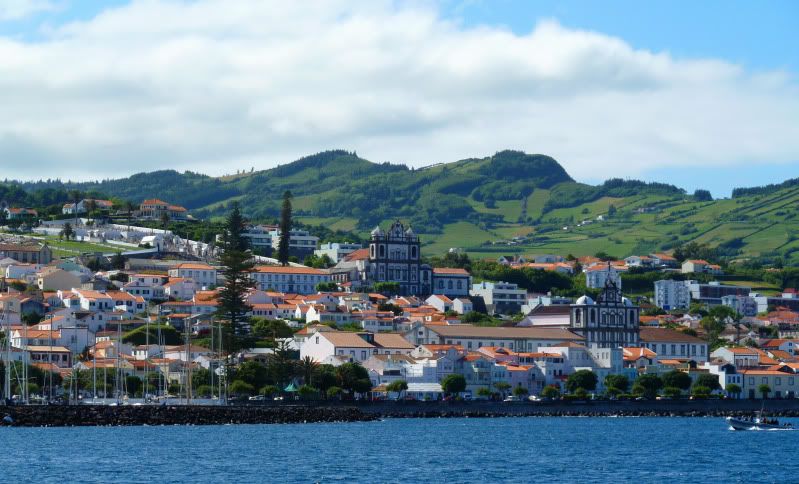
At the end of the harbor we stopped in the local tourist information office and rented bikes. Actually, “rent” is a slight misnomer. We actually “borrowed” them. The bikes are free, with the only stipulations being that you don’t leave Horta and you return the bikes before 8 pm that day.
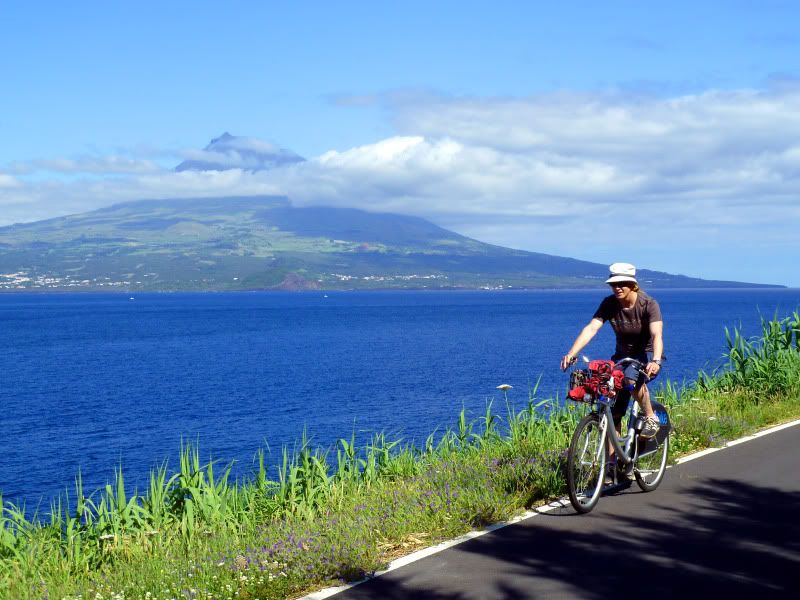
We used the bikes to head over to Porto Pim, which is the original harbor. In 1878 the harbor changed to the present-day location. I assume the switch was for two main reasons: 1) a need for larger boats to dock and 2) less need for protection (especially from pirates, which had been continually thwarted at the old Porto Pim). Porto Pim is best viewed from a hill that stands above it called Monte da Guia. In this photo, Porto Pim lies at the bottom and all of Horta lies above. You can also see the present-day harbor.

Another view, with Faial’s caldera the high point in the distance and the Forte de São Sebastião at the pointy shoreline at the bottom.

The hill also allowed us to see other volcanic calderas that vanished into the ocean.
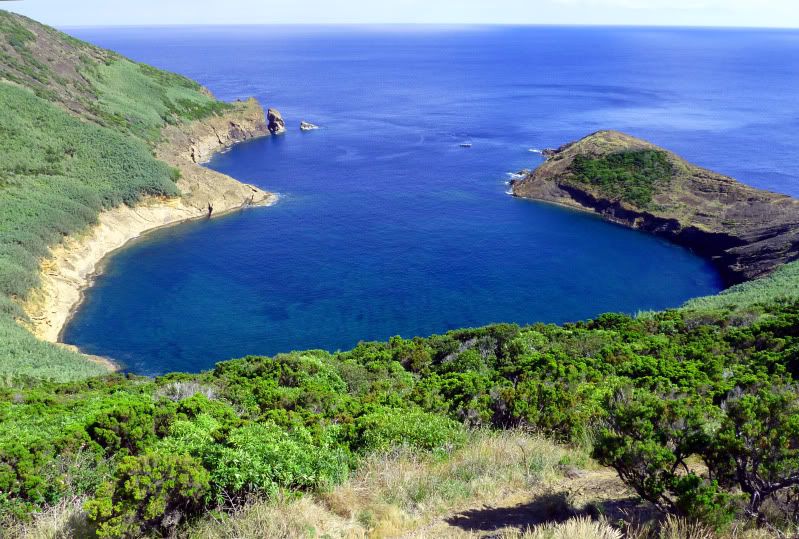
Porto Pim also houses one of Faial’s better beaches. The Azores are not known for their beaches. Really, they are few and far between. But, this beach was big and inviting.

One of the entrances to the beach is through the old fortress, Portão Fortificado de Porto Pim. I believe this was built in the 17th century.

Another view looking across Porto Pim at the old whaling factory, with the volcano on the neighboring Pico rising behind.

The whaling factory was used to harvest and refine parts of the whales that the whalers killed. Now that whaling is no longer practiced, this factory has been converted into a whaling museum.

One of the first things you see in this museum is this video called The Last Whalers. Made in 1969, it documents the lives of whalers. It is disturbing in the sense that you actually witness the killing of a whale. But, in capturing this, you begin to understand the respect whalers had for these whales, the hardship of that kind of life, how whaling has tied the Azores to the States, and the overall history of the Azores as well. Like an excerpt from a chapter of Moby-Dick, this video is worth the watch.
This is where they pulled the whale out of the sea to begin harvesting its parts.

The boilers. They boiled everything- from the fat to the bones to the meat. The sperm whales were especially treasured for their “spermaceti”, which is a waxy substance located in their heads. This substance was used in candles/lanterns and cosmetics, among many other things. Now we know that this substance changes density to help the whale to dive or rise when needed.

After Porto Pim, we headed back to central Horta and found ourselves at yet another historical location – Cafe Sport.
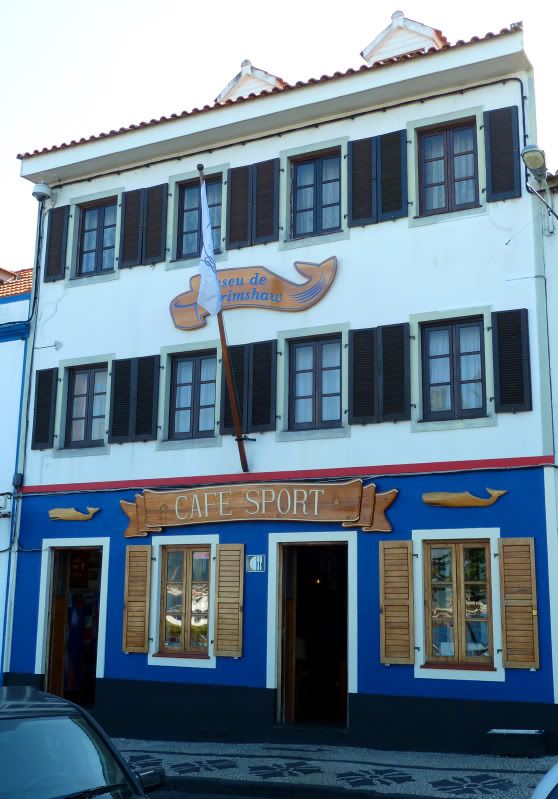
Cafe Sport opened on Christmas Day 1918 as just another bar in bustling Horta. But, in the 1950’s Horta became a popular stopover for trans-Atlantic yachts. As more and more sailors visited Horta, they found themselves at Cafe Sport and the bar began to build its unique reputation. Since then, Café Sport has witnessed a continuous parade of sailors, many leaving their own mark. Much like the murals in the harbor, sailors leave a flag in Cafe Sport.
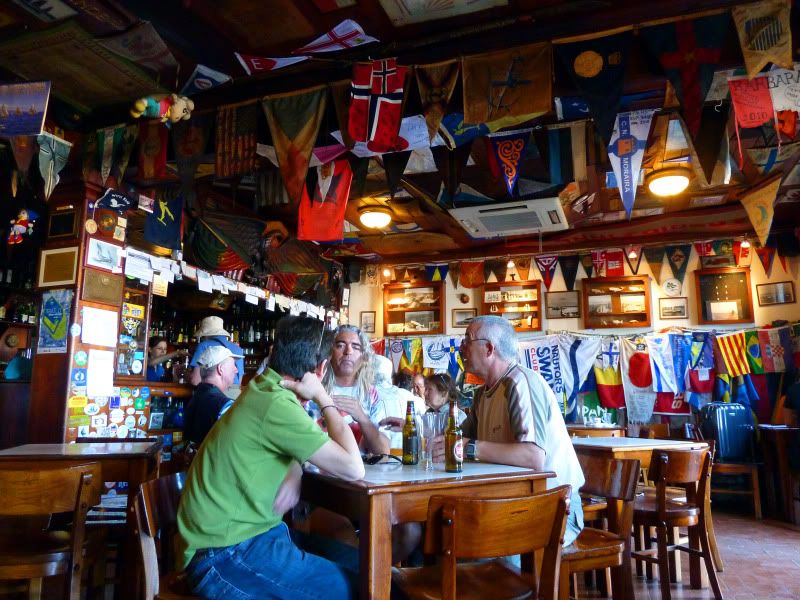
It’s hard not to smile when surrounded by this nautical nostalgia.

Up next- other sites on the island of Faial 🙂
Complete List of Honeymoon Trip Reports:
Barcelona
Gaudi
Spanish Pyrenees
Climb of Tosa d’Alp
Cardona Castle
Montserrat
Five hours in Lisbon
Horta Part I
Horta Part II
Island of Faial
Island of Pico, Day 1
Portugal and The Azores Highest Point: Montanha Do Pico 7,713′
Watching Whales & Swimming with Dolphins
Pico Adegas, Gardens, and More
Island of Pico
- Mount Buckskin (17 May 2020) - May 28, 2020
- Horseshoe Ski (14 May 2020) – The mountain whose journey nearly killed me - May 27, 2020
- Sayres X-Rated Ski (10 May 2020) - May 19, 2020

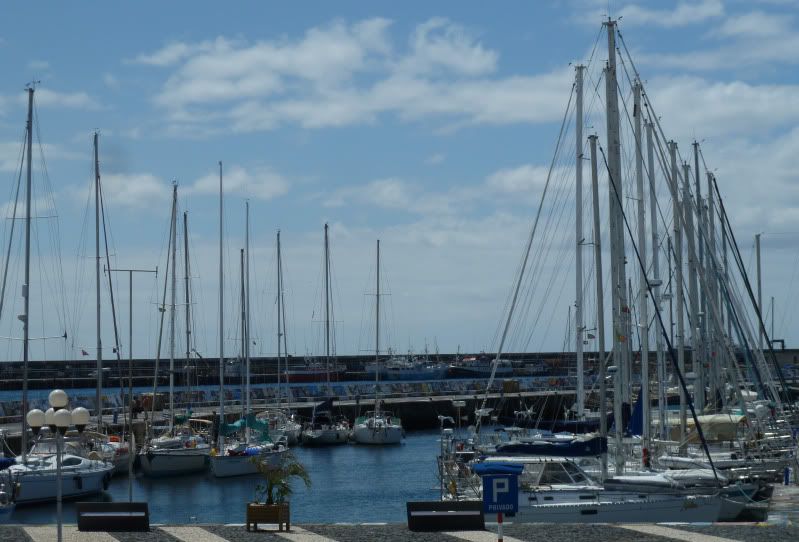

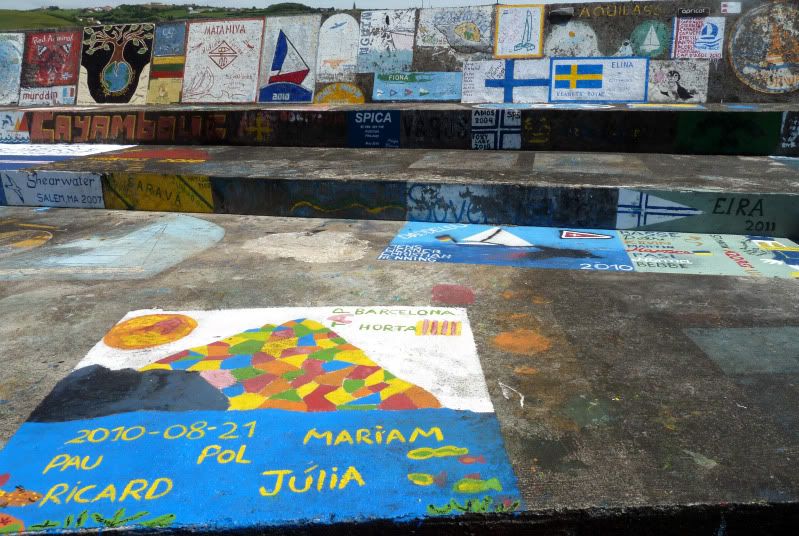




Pingback: Honeymoon TR: Island of Faial – 14erskiers.com